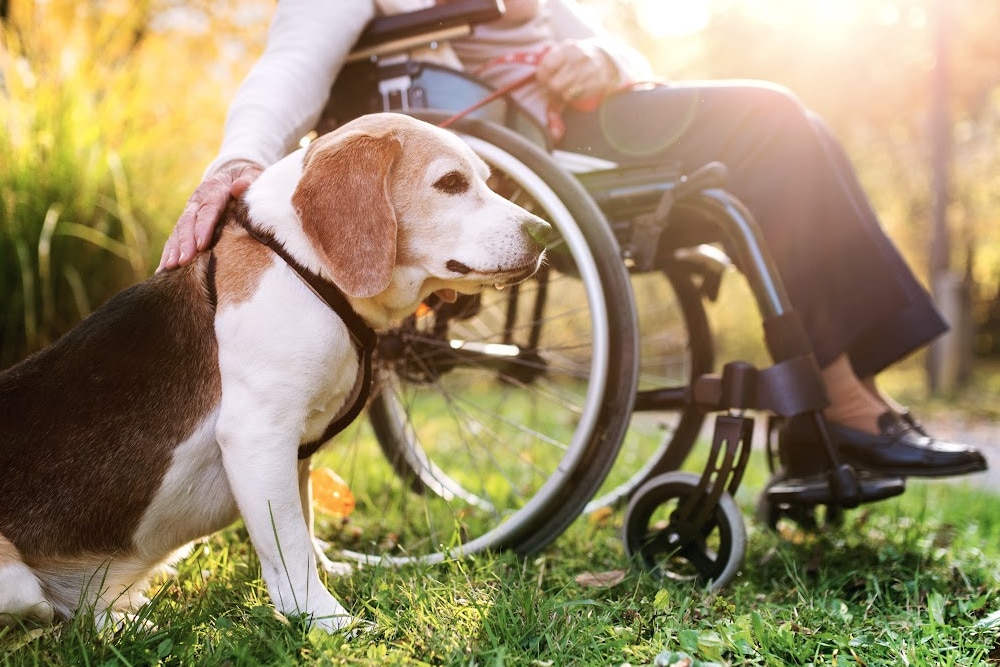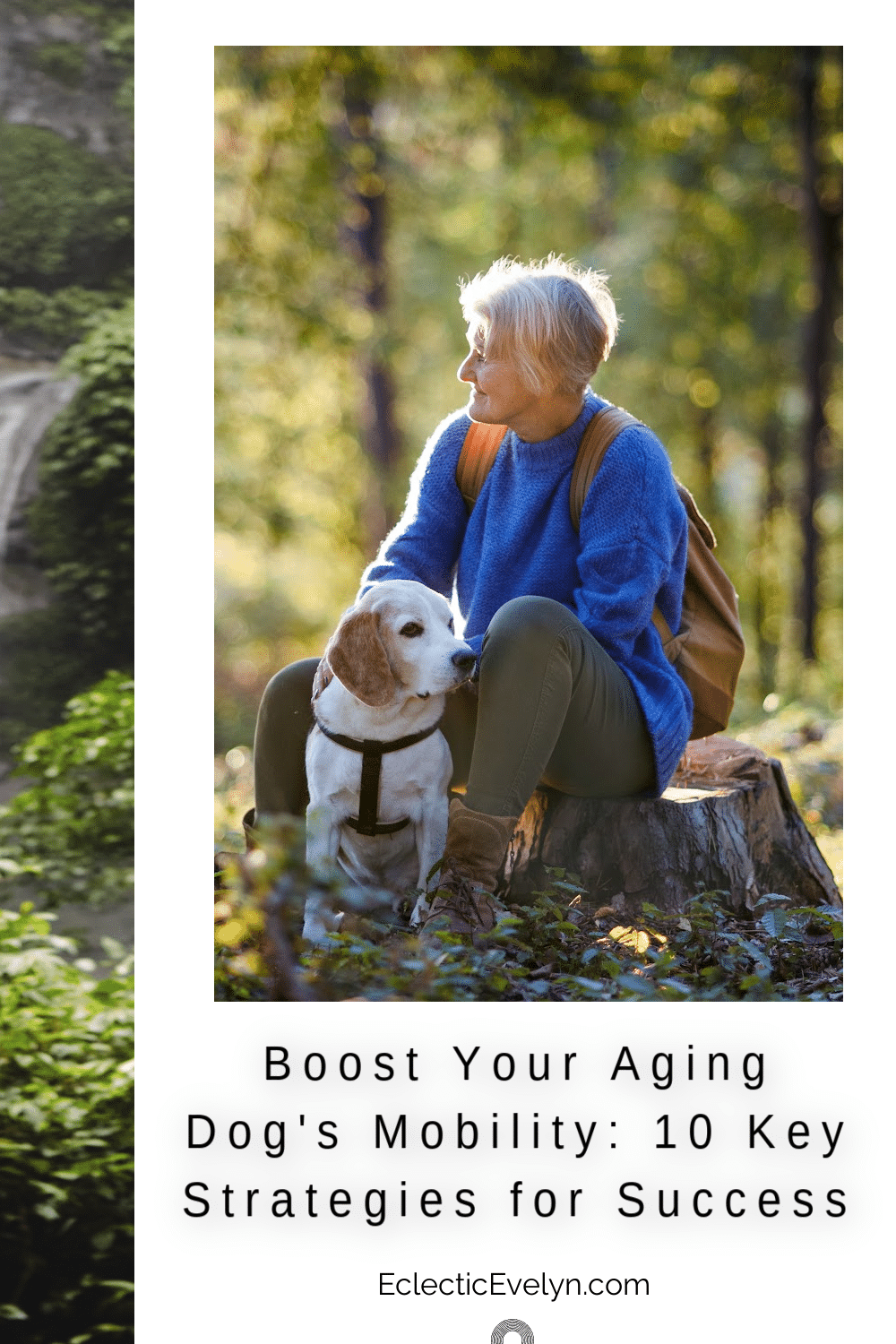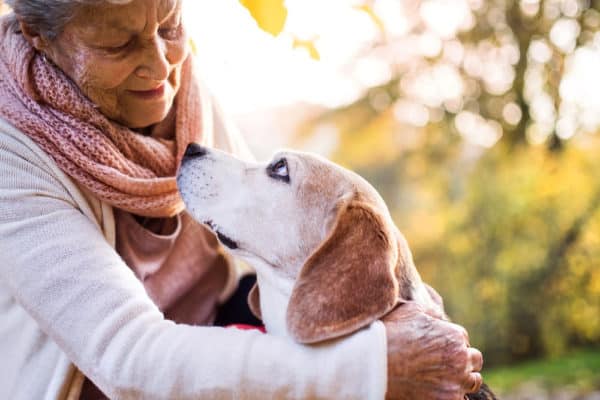As your aging dog becomes a cherished member of your family, it’s essential to recognize the evolving needs that come with their advancing years. Studies have underscored the multitude of health advantages associated with canine companionship, including aiding in weight management. However, as your faithful companion ages, you may begin to notice subtle signs of mobility issues, such as loss of balance, reluctance to partake in walks, or difficulty climbing. These signs serve as gentle reminders of the importance of proactive care to ensure your aging dog’s continued well-being. In this article, we’ll explore ten essential steps you can take to address and improve mobility issues in your aging dog, helping them maintain an active, happy, and fulfilling life.
Regular Exercise
Regular exercise is key to keeping your pet healthy and stronger, even as they age. A little movement each day goes a long way in preventing stiffness and soreness. And the best part is that you don’t even need to go overboard. Even short walks or playtime can make a big difference. There’s no reason to be alarmed if they can’t walk as far as they used to. Just adjust the distance to suit their energy levels, or skip the walk altogether and have some fun playing fetch in the backyard. Even if your dog is not as active as before, they’ll still enjoy the exercise and quality time with you.

Proper Nutrition
As your dog ages, their body will struggle to absorb nutrients, leading to muscle loss and sluggishness. That’s why it’s best to ensure proper nutrition at this stage. Senior dog food or meals for sensitive stomachs are easier to digest, ensuring your pet gets the good stuff they need. Supplements like glucosamine and chondroitin can also help with joint pain and inflammation.
Don’t forget the essential fatty acids found in fish oil or some dog foods, which act like tiny bodyguards for their joints. Remember, a healthy weight is key, too. Shedding some extra pounds can ease their discomfort and boost their energy levels. For treats, CBD dog chews have been shown to be helpful for supporting joint health, ensuring your dog is not hindered by discomfort or stiffness.
Mobility support
Some older dogs might find it challenging to get around on their own. Fortunately, there are mobility supports like dog wheelchairs that can help your dog stay active and engaged with the world. Whether they’re recovering from an injury or need long-term assistance, mobility support can help your furry friend explore, play fetch, and spend quality time with you. It’s like giving them a whole new lease on life, allowing them to enjoy every moment with their family for as long as possible.
Massage to ease discomfort
A gentle massage might ease your dog’s pain, calm their anxiety, and even help them move a little easier. Think of it like a spa for your furry friend. However, remember to go slow and gentle, using light pressure around their tender joints. Some dogs might make playful sounds or wag their tails in delight, while others might not be too keen. But it’s worth a shot. After all, even a little extra comfort can make a big difference for your senior dog. Also, you can check online to learn a few simple dog massages you can try at home to help your aging furry companion.
Comfortable Sleeping Arrangements
As dogs age, they may experience discomfort due to arthritis or other joint issues, making it crucial to provide them with comfortable sleeping arrangements. Invest in a supportive orthopedic bed designed specifically for older dogs. These beds offer extra cushioning and support, relieving pressure on achy joints and promoting better sleep quality. Additionally, consider placing the bed in a warm and quiet area free from drafts to ensure your furry friend gets the rest they need to maintain mobility and overall well-being.
Regular Veterinary Check-Ups
Regular veterinary check-ups are essential for monitoring your aging dog’s health and addressing any mobility issues promptly. Your veterinarian can conduct thorough examinations to identify potential problems early on, such as arthritis, degenerative joint disease, or other age-related conditions. Based on their findings, they can recommend appropriate treatment options, such as pain management medications, physical therapy, or dietary adjustments. By staying proactive with veterinary care, you can help your dog maintain mobility and enjoy a higher quality of life as they age.
Gentle Low-Impact Exercise
Incorporating gentle, low-impact exercises into your aging dog’s routine can help improve mobility and joint flexibility without putting excessive strain on their bodies. Consider activities such as swimming, which provides excellent cardiovascular exercise while being gentle on the joints. Hydrotherapy sessions, either at a specialized facility or in your own backyard pool, can help relieve stiffness and improve muscle tone. Additionally, regular short walks on soft surfaces like grass or sand can help strengthen muscles and maintain mobility without causing discomfort.
Environmental Modifications
Make simple modifications to your home environment to accommodate your aging dog’s mobility needs. Ensure that ramps or steps are available to help them access elevated surfaces such as beds or sofas without straining their joints. Remove obstacles and hazards from pathways to prevent tripping or falling accidents. Consider installing non-slip flooring to provide better traction, especially in areas where your dog spends a lot of time. These small adjustments can make a significant difference in your dog’s ability to move around safely and comfortably at home.

Mental Stimulation and Enrichment
Keeping your aging dog mentally stimulated is just as important as physical exercise for maintaining overall mobility and cognitive function. Engage their minds with interactive puzzle toys, scent games, or obedience training sessions. Incorporate new experiences and challenges into their daily routine to keep their brains active and engaged. Mental stimulation not only helps prevent boredom and depression but also promotes a sense of well-being that can positively impact your dog’s physical health and mobility.
Remember Your Aging Dog Needs Patience and Understanding
Finally, remember to be patient and understanding as you navigate the challenges of caring for an aging dog with mobility issues. Your furry companion may require extra time and assistance to perform everyday tasks, such as getting up or going for walks. Offer gentle encouragement and support, celebrating their achievements no matter how small. Be attuned to their individual needs and preferences, adjusting your caregiving approach accordingly. By showing patience and understanding, you can strengthen the bond with your aging dog and provide them with the love and support they need to thrive in their golden years.
By incorporating these tips into your care routine, you can help improve mobility, comfort, and overall quality of life for your aging dog. Remember to consult with your veterinarian for personalized advice and recommendations based on your dog’s specific health needs and condition. With proper care and attention, you can ensure that your beloved companion enjoys their golden years to the fullest, staying active, happy, and healthy for as long as possible.
Caring for an aging dog with mobility issues requires a multifaceted approach that addresses their physical, emotional, and environmental needs. By focusing on regular exercise, proper nutrition, mobility support, massage therapy, comfortable sleeping arrangements, regular veterinary check-ups, gentle low-impact exercise, environmental modifications, mental stimulation, and enrichment, you can help your furry friend enjoy a fulfilling and comfortable life in their senior years.




